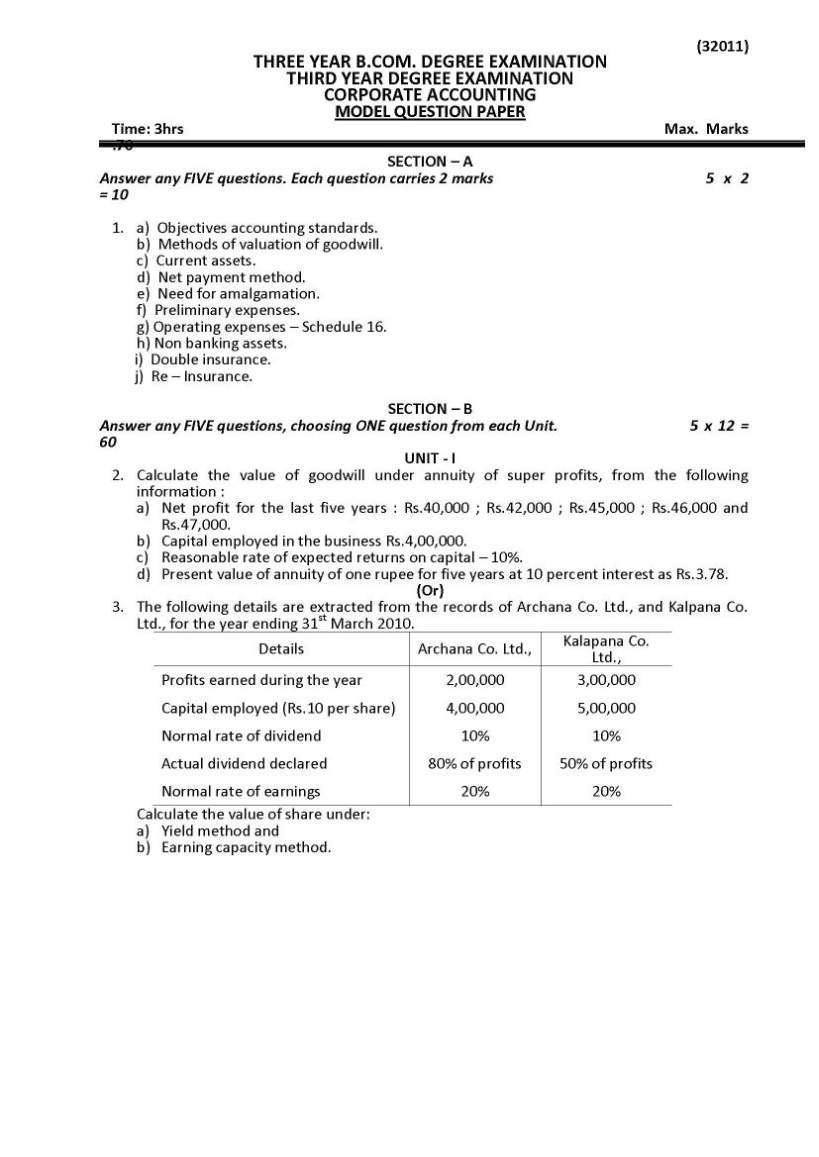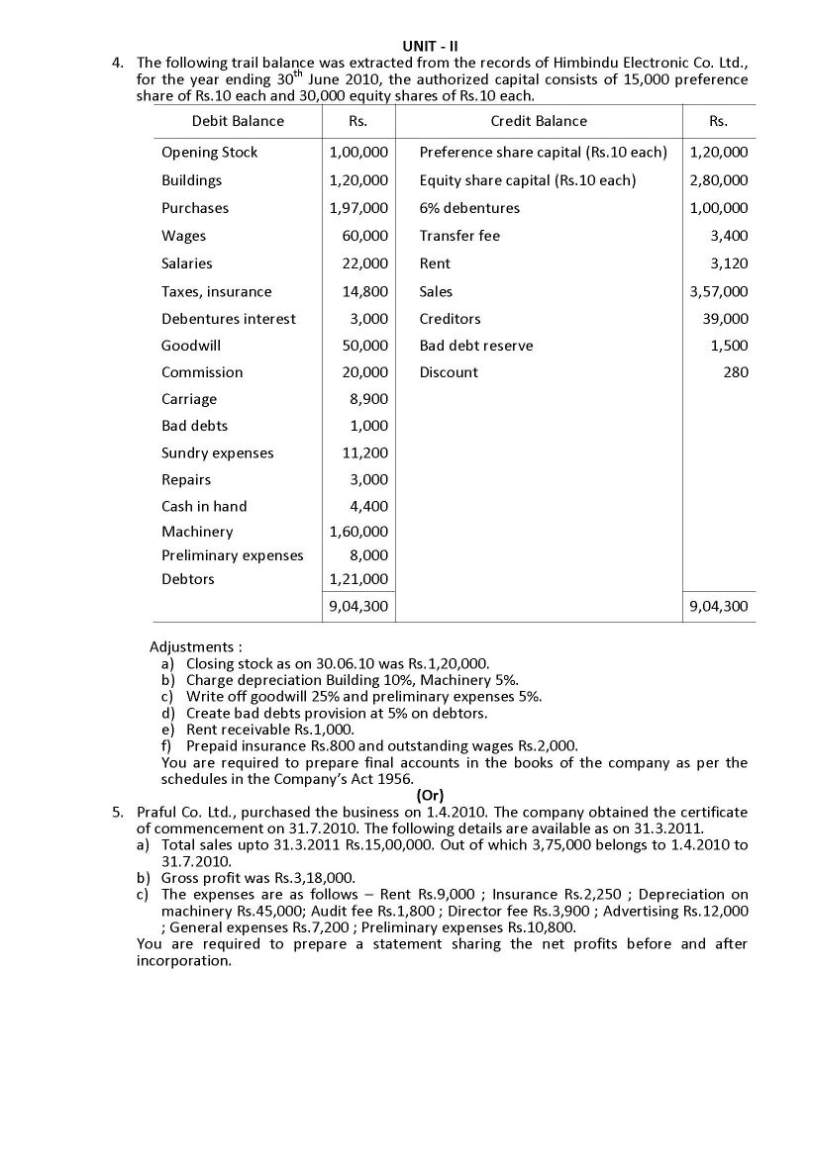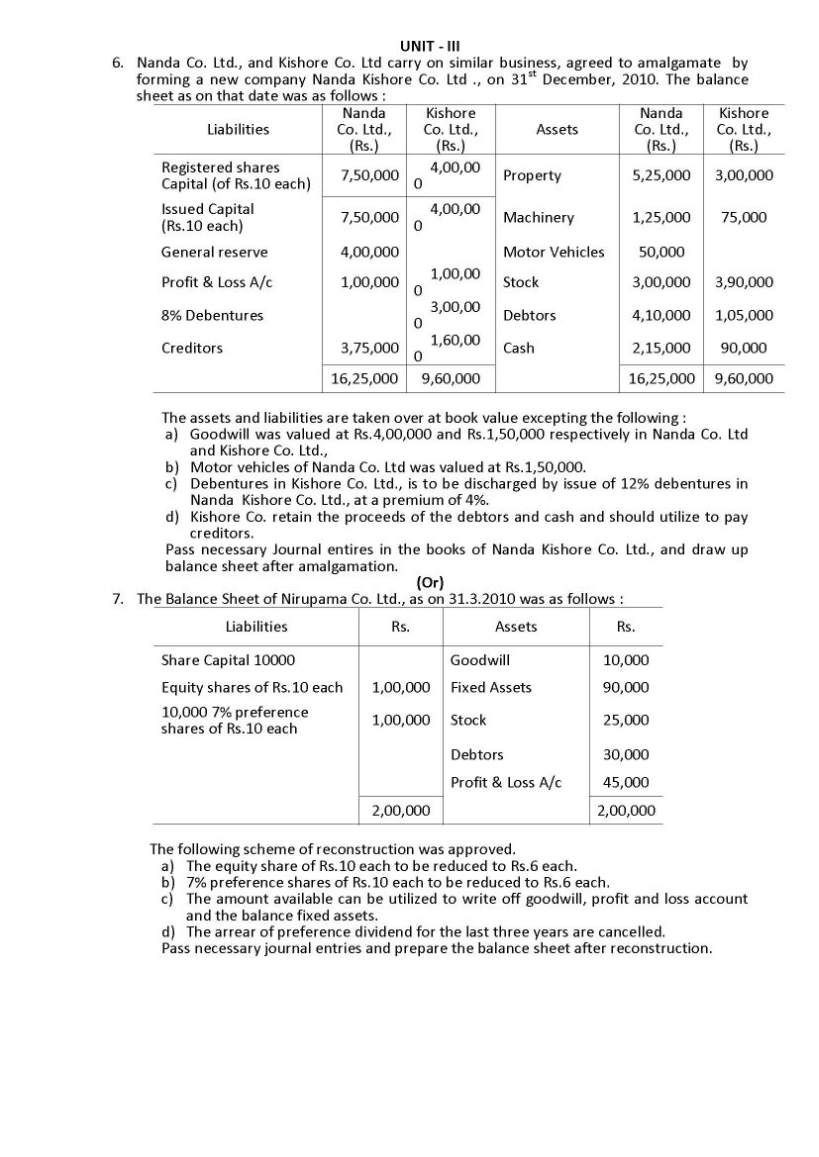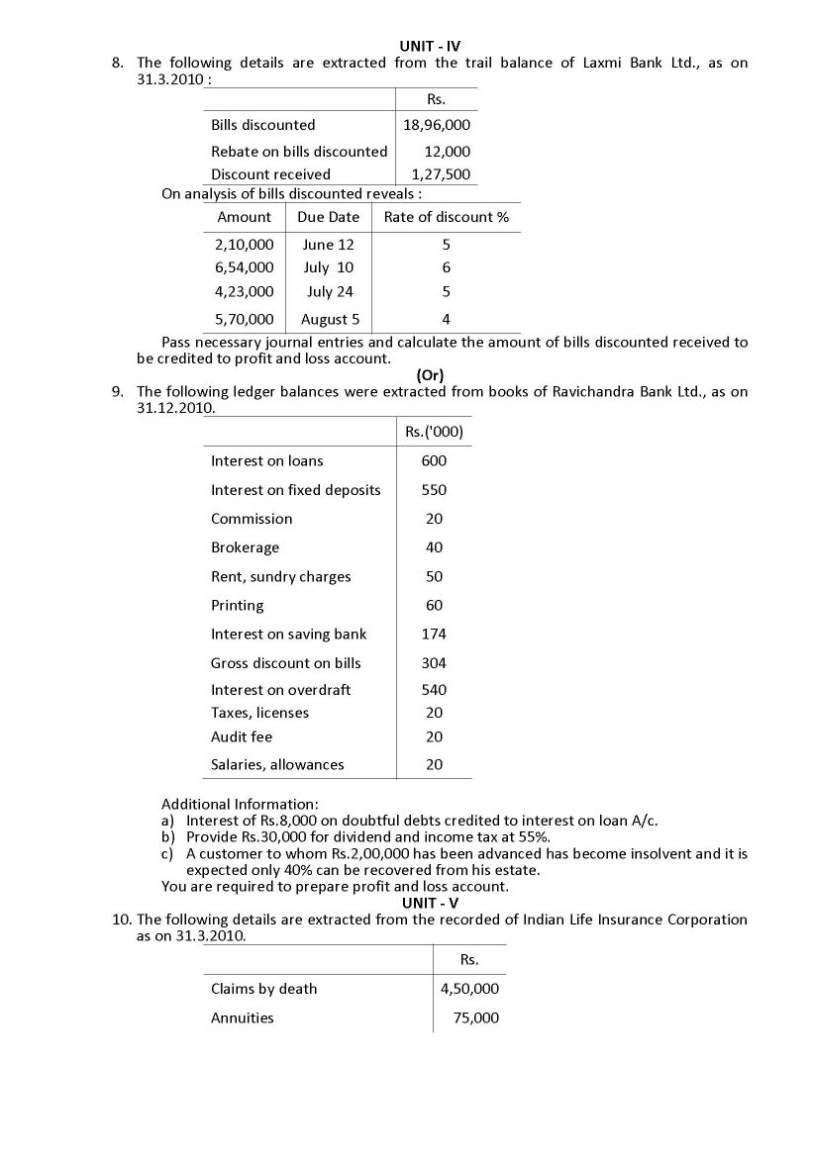|
#4
16th May 2015, 04:15 PM
| |||
| |||
| Re: Corporate Accounting Exam Paper
As you want to get question papers of Corporate Accounting of Vikrama Simhapuri University, so here is following question papers: Vikrama Simhapuri University Corporate Accounting Paper SECTION A Answer any FIVE questions. Each question carries 2 marks 1 . a) Objectives accounting standards. b) Methods of valuation of goodwill. c) Current assets. d) Net payment method. e) Need for amalgamation. f) Preliminary expenses. g) Operating expenses– Schedule 16. h) Non banking assets. i) Double insurance. j) Re– Insurance. SECTION B Answer any FIVE questions, choosing ONE question from each Unit. Calculate the value of goodwill under annuity of super profits, from the following information : a) Net profit for the last five years : Rs.40,000 ; Rs.42,000 ; Rs.45,000 ; Rs.46,000 and Rs.47,000. b) Capital employed in the business Rs.4,00,000. c) Reasonable rate of expected returns on capital – 10%. d) Present value of annuity of one rupee for five years at 10 percent interest as Rs.3.78. Vikrama Simhapuri University Corporate Accounting Paper      Contact Details Vikrama Simhapuri University Dargamitta Nellore - 524 003 Andhra Pradesh 0861 2352366 Map [MAP]Vikrama Simhapuri University Dargamitta Nellore -[/MAP] more paper detail to atteched a pdf file; |